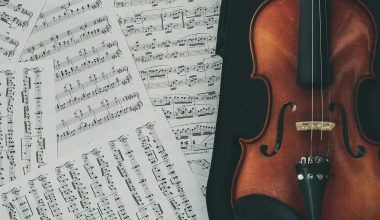There’s something magical about Christmas that transcends time. While modern carols fill our homes with joy today, the tradition of Christmas music dates back centuries. Medieval Christmas songs, with their unique melodies and poetic lyrics, offer a glimpse into the festive spirit of the Middle Ages. These songs carry a timeless charm that can still warm hearts and evoke a sense of wonder.
What Are Medieval Christmas Songs?
Medieval Christmas songs are carols and hymns composed during the Middle Ages, roughly from the 5th to the 15th centuries. These songs were often performed in churches, village squares, or at noble gatherings. They celebrated the nativity story, the joys of winter, and the shared spirit of the season. Many of these melodies are simple yet deeply moving, often sung in Latin, Old English, or other regional languages of the time.
Interestingly, the word “carol” itself comes from the Old French word carole, meaning a circle dance accompanied by singing. This origin highlights how medieval Christmas songs were not just about listening but also about participation and community celebration.
The Origins of Christmas Music in the Middle Ages
To truly appreciate medieval Christmas songs, it’s essential to understand their roots. Early Christians adapted pagan winter solstice celebrations, infusing them with the story of Christ’s birth. Music became a central part of these celebrations. Gregorian chants, for example, played a significant role in church services, and their solemn tones inspired many medieval Christmas hymns.
Over time, these solemn chants evolved. By the 12th century, the influence of troubadours and minstrels brought more lively and joyous tunes into the mix. Songs like “The Boar’s Head Carol” and “Gaudete” began to bridge the gap between sacred and secular celebrations.
Popular Medieval Christmas Songs
Several medieval Christmas songs have stood the test of time and remain popular today. Let’s explore a few:
1. Gaudete This Latin hymn, meaning “Rejoice,” dates back to the 16th century but is rooted in earlier medieval traditions. Its upbeat melody and celebratory lyrics make it a favorite during the holiday season.
2. The Coventry Carol Though somber in tone, this 16th-century carol tells the story of the Massacre of the Innocents. Its haunting melody reflects the depth and complexity of medieval Christmas songs.
3. The Boar’s Head Carol This festive song celebrates the presentation of a boar’s head at a feast, a tradition in medieval England. It’s a lively tune that captures the merriment of medieval banquets.
4. In Dulci Jubilo A beautiful mix of Latin and German, this song praises the nativity with a tender and joyful melody. It’s been adapted countless times over the centuries.
How Were Medieval Christmas Songs Sung?
Medieval Christmas songs were performed in various settings, from grand cathedrals to humble village squares. In churches, choirs would sing hymns and chants in harmony, creating a heavenly sound that resonated in the vaulted ceilings. Villagers, on the other hand, might gather around a fire, singing lively carols accompanied by simple instruments like lutes, flutes, or drums.
Community participation was a key aspect of these songs. People of all ages would join in, creating a sense of unity and shared joy. These songs were often passed down orally, which is why many medieval Christmas songs have multiple variations.
The Instruments Behind the Music
Medieval music relied on a variety of instruments to create its distinct sound. Common instruments included the lute, hurdy-gurdy, and psaltery. Percussion instruments like tambourines and drums added rhythm, while wind instruments such as recorders and shawms provided melody. These instruments, combined with vocal harmonies, created a rich tapestry of sound that brought medieval Christmas songs to life.
The Role of Language in Medieval Christmas Songs
Language played a significant role in the appeal of medieval Christmas song. Many were written in Latin, which was the language of the church and education. However, as the centuries progressed, songs began to incorporate vernacular languages. This made them more accessible to common folk, allowing the joyous messages of these songs to spread widely.
For example, “Adam Lay Ybounden,” an English carol, uses Middle English to narrate the fall and redemption of humanity. Similarly, “Es ist ein Ros entsprungen” (Lo, How a Rose E’er Blooming) is a German hymn that highlights the blending of faith and folk tradition.
Why Medieval Christmas Songs Still Resonate
Medieval Christmas song have a timeless quality that continues to resonate with modern audiences. Their melodies are often simple yet profound, evoking a sense of peace and wonder. Moreover, these songs connect us to a rich cultural heritage, reminding us of the enduring human need for celebration and connection.
Listening to medieval Christmas song is like stepping back in time. It’s easy to imagine villagers gathering under a starlit sky or a choir’s voices filling a candlelit cathedral. These songs capture the essence of Christmas—a time of joy, hope, and community.
Bringing Medieval Christmas Songs to Modern Times
Today, many musicians and choirs are reviving medieval Christmas songs, ensuring their legacy endures. Groups like The Sixteen and Anonymous 4 specialize in early music, offering stunning renditions of these ancient carols. Modern adaptations often blend medieval instruments with contemporary arrangements, creating a unique fusion that appeals to diverse audiences.
If you’re curious about experiencing medieval Christmas songs, look for local choir performances or explore recordings online. Adding these timeless tunes to your holiday playlist can bring a touch of history and elegance to your celebrations.
Conclusion
Medieval Christmas song are more than just music; they are windows into the past. They tell stories of faith, joy, and tradition that have been cherished for centuries. By embracing these songs, we not only preserve a rich musical heritage but also deepen our connection to the true spirit of Christmas.
So this holiday season, let the timeless melodies of medieval Christmas song transport you to an era of simple joys and heartfelt celebrations. Whether you’re singing “Gaudete” with friends or listening to “In Dulci Jubilo” by a crackling fire, these songs are sure to make your Christmas truly special.
For further reading, explore these related articles:
- Stevie Nicks – The Timeless Queen of Rock Who Captivates Generations
- BTS Debut Song: The Story of ‘No More Dream’ and How BTS Started Their Journey
For additional resources on music marketing and distribution, visit Deliver My Tune.






